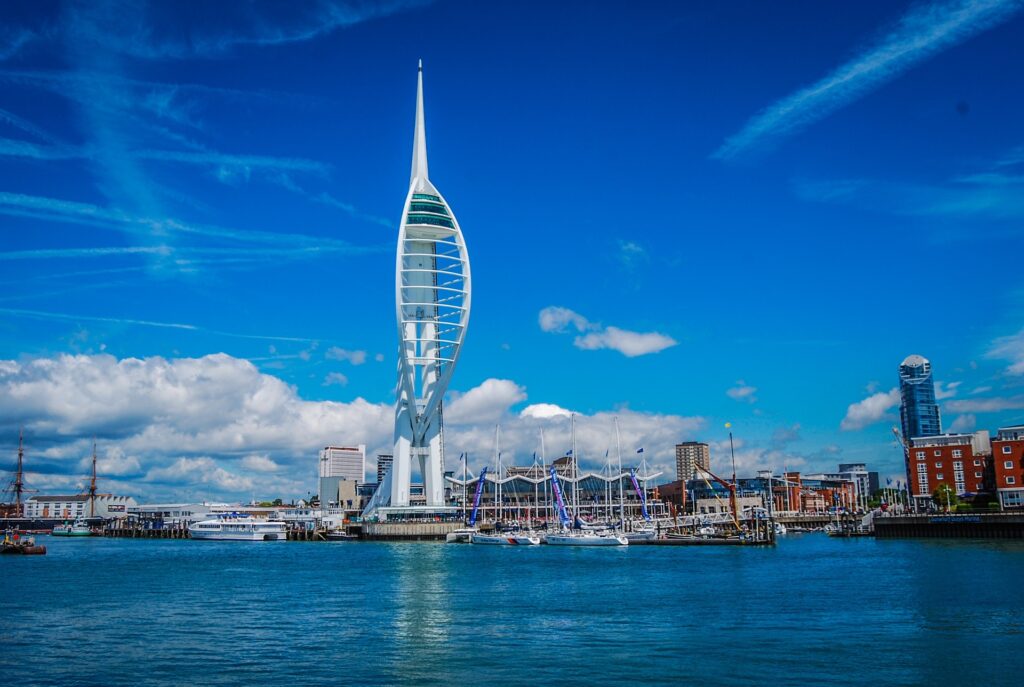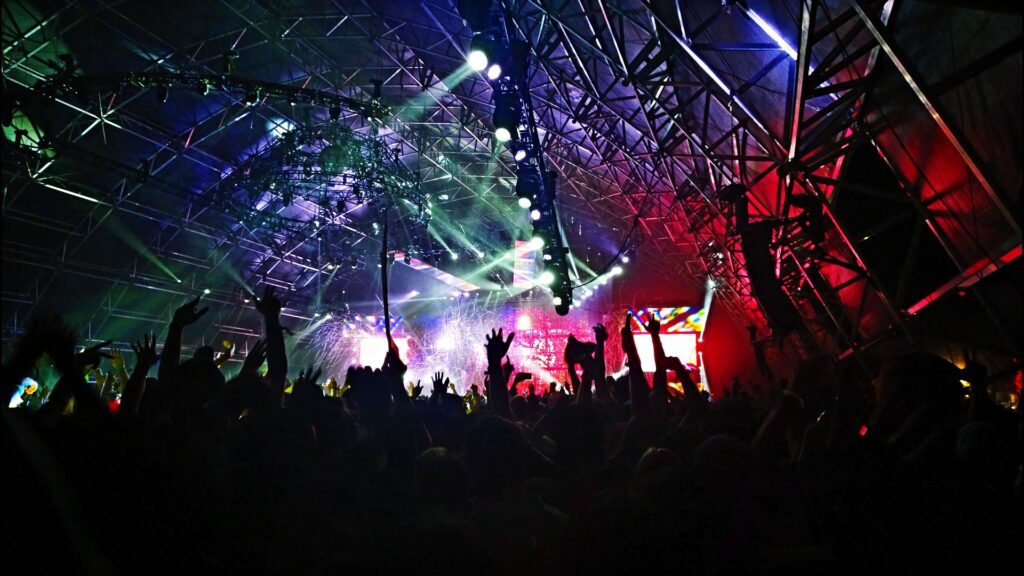How DJs Have Shaped Rave Music: From House to Modern-day
Written by Chapperzpur on 1 August 2024
DJs are often celebrated for their ability to craft memorable live experiences by mixing and playing tracks. However, many DJs are also accomplished producers who have had a profound impact on the music industry. Their dual role allows them to shape the sound of electronic dance music (EDM) and the rave scene through both performance and creation. This blog explores how DJ/producers have influenced rave music, tracing its evolution from house and acid house to various sub-genres, including breakbeat, drum and bass, and beyond.
1. DJs and the Birth of Rave Music
The origins of rave music can be traced back to the early 1980s, when house music began to take shape. Key DJ/producers of this era set the stage for the development of rave culture.
Frankie Knuckles: Known as the “Godfather of House Music,” Frankie Knuckles was a pioneering DJ and producer who helped define house music at Chicago’s Warehouse nightclub. His innovative tracks, such as “Your Love” and “Baby Wants to Ride,” utilized synthesizers and drum machines in groundbreaking ways, laying the foundation for rave music.
Larry Heard (Mr. Fingers): An influential DJ and producer, Larry Heard is renowned for his deep house productions like “Can You Feel It.” His work emphasized melodic and soulful elements within house music, influencing the broader rave scene.
Phuture (DJ Pierre): The Chicago-based group Phuture, featuring DJ Pierre, introduced acid house with their 1987 track “Acid Tracks.” The use of the Roland TB-303 bass synthesizer created the genre’s distinctive squelchy sound, marking a significant milestone in the evolution of rave music.
Marshall Jefferson: Another pivotal figure in the house music scene, Jefferson produced the iconic track “Move Your Body (The House Music Anthem),” which became a foundational anthem in rave culture.
Ron Hardy: An influential DJ at Chicago’s Music Box, Hardy was known for his eclectic mixes and experimental approach, which pushed the boundaries of house music and influenced many future producers.
2. The Rise of Breakbeat and Early Rave
As house and acid house gained traction, breakbeat emerged as a key element of the early rave scene.
Carl Cox: Carl Cox, a prominent DJ and producer, played a significant role in the development of breakbeat and techno. His energetic performances and influential productions helped establish breakbeat as a core component of rave culture.
The Prodigy (Liam Howlett): Formed in 1990 by Liam Howlett, The Prodigy were instrumental in popularizing breakbeat. Their high-energy tracks, such as “Charly” and “Out of Space,” combined breakbeat rhythms with elements of punk and electronic music, defining the sound of early rave and dance music.
Orbital (Phil and Paul Hartnoll): As both DJs and producers, the Hartnoll brothers created influential breakbeat tracks such as “Chime” and “Belfast,” which were central to the early rave scene.
Altern-8 (Mark Archer and Chris Peat): Altern-8 were pioneers in the UK breakbeat hardcore scene, with tracks like “Activ-8 (Come With Me)” defining the high-energy, breakbeat-driven sound of early 1990s raves.
3. The Evolution to Drum and Bass and Jungle
The early 1990s saw the emergence of drum and bass (D&B) and jungle music, both of which evolved from the breakbeat sound.
Goldie: Goldie (Clifford Price) was a pivotal figure in the drum and bass scene. His role as a DJ and producer was crucial in shaping the genre, with his 1995 album *Timeless* and tracks like “Inner City Life” exemplifying the complex rhythms and basslines characteristic of drum and bass.
Roni Size: Roni Size’s contributions to drum and bass were equally significant. His 1997 album ‘New Forms’ showcased his innovative production techniques and helped popularize the genre. Size’s work with his group Reprazent played a key role in bringing drum and bass into the mainstream.
LTJ Bukem: Known for his atmospheric and jazzy take on drum and bass, LTJ Bukem is both a DJ and producer whose work, including tracks like “Demon’s Theme,” has influenced the evolution of the genre.
DJ Hype: An influential figure in the drum and bass and jungle scenes, DJ Hype is known for both his DJ skills and production work, including the iconic track “Shot in the Dark.”
Andy C: Andy C is a pioneering drum and bass DJ and producer, co-founder of the RAM Records label, and known for tracks like “Valley of the Shadows.” His technical skills and production work have significantly influenced the genre.
Fabio & Grooverider: Both Fabio and Grooverider have been instrumental in the development of drum and bass and jungle, both as DJs and producers. Their legendary sets on BBC Radio 1’s “One in the Jungle” show helped bring the genre to a wider audience.
Shy FX: A key figure in the jungle and drum and bass scenes, Shy FX is known for his seminal track “Original Nuttah,” which helped define the sound of jungle in the early 1990s.
4. Expansion into Trance, Techno, and Beyond
As rave music continued to evolve, DJ/producers played a key role in expanding into new sub-genres, each bringing unique sounds and influences.
Paul Oakenfold: A pioneer in the trance scene, Paul Oakenfold’s work as a DJ and producer helped popularize trance music in the 1990s. His mixes and productions, including the iconic ‘Perfecto’ series, were instrumental in defining the trance sound.
Richie Hawtin (Plastikman): Known for his contributions to techno, Richie Hawtin has been influential in pushing the boundaries of electronic music. His minimalist style and innovative use of technology have left a lasting impact on the techno genre.
Sasha and John Digweed: Both DJs and producers, Sasha and John Digweed were key figures in the progressive house and trance scenes, with their influential ‘Northern Exposure’ mix series setting the standard for the genres.
Carl Craig: An influential figure in the Detroit techno scene, Carl Craig’s work as a DJ and producer has helped shape the sound of techno. His innovative productions and remixes have left a lasting legacy.
5. The Big Beat and Chemical Revolution
The mid-1990s saw the rise of big beat, a genre characterized by heavy breakbeats and synthesizer-generated loops.
The Chemical Brothers (Tom Rowlands and Ed Simons): Both members are DJs and producers who pioneered the big beat genre with albums like’Dig Your Own Hole’ and tracks such as “Block Rockin’ Beats.”
Fatboy Slim (Norman Cook): Norman Cook, known as Fatboy Slim, further popularized big beat with his energetic tracks and vibrant live performances. Songs like “Right Here, Right Now” and “The Rockafeller Skank” helped cement his place in rave culture.
The Crystal Method: American duo The Crystal Method, comprised of Ken Jordan and Scott Kirkland, are DJs and producers known for their contributions to the big beat genre, with tracks like “Busy Child” and “Keep Hope Alive.”
Propellerheads: Known for their hit single “Spybreak!” and the ‘Decksandrumsandrockandroll’ album, Propellerheads contributed significantly to the big beat movement.
6. The Rise of Dubstep and Future Bass
The 2000s introduced new sounds with the rise of dubstep and future bass, driven by innovative DJ/producers.
Skrillex (Sonny Moore): Skrillex revolutionized dubstep with his distinctive sound, characterized by aggressive bass drops and complex rhythms. His track “Scary Monsters and Nice Sprites” was instrumental in bringing dubstep to a global audience and influencing the broader EDM scene.
Benga and Skream: Both DJs and producers, Benga and Skream were pivotal in the development of dubstep, with tracks like “Night” and “26 Basslines” shaping the early sound of the genre.
Rusko: Known for his energetic style, Rusko is a key figure in dubstep. Tracks like “Cockney Thug” helped define the early sound of the genre.
Flume (Harley Streten): Flume is a leading figure in future bass, known for his innovative production techniques and DJ performances. Tracks like “Never Be Like You” have influenced a new wave of electronic music.
James Blake: As both a DJ and producer, James Blake has been influential in the post-dubstep scene, blending elements of dubstep with soulful vocals and experimental sounds.
7. The Modern Rave Scene and EDM-Pop Crossover
Today, the rave scene continues to evolve with contributions from DJ/producers who blend various styles and genres to create new sounds.
David Guetta: David Guetta has been a key figure in bridging the gap between electronic music and mainstream pop. His production work, including collaborations with artists like Sia and Usher, has popularized EDM and influenced the sound of modern rave music.
Calvin Harris: Calvin Harris’s contributions to the “EDM-pop” crossover genre have made him a significant figure in contemporary rave culture. His tracks like “I’m Not Alone” and “Summer” blend catchy pop melodies with electronic beats, shaping the sound of modern dance music.
Kygo (Kyrre Gørvell-Dahll): Known for his development of tropical house, Kygo is both a DJ and producer who has popularized tropical house and influenced the sound of electronic music festivals worldwide.
Diplo (Thomas Wesley Pentz): Diplo’s work as a DJ and producer has been instrumental in merging electronic music with global influences. His projects, including Major Lazer, have brought dancehall and reggae elements into the electronic music sphere.
Deadmau5 (Joel Zimmerman): Deadmau5 has been a major force in shaping progressive house and electro house. His production work, including tracks like “Strobe” and “Ghosts ‘n’ Stuff,” has contributed to the evolution of electronic music and the modern rave experience.
Joey Beltram: A techno pioneer, Joey Beltram’s early 1990s productions like “Energy Flash” have had a lasting impact on the genre and rave culture.
Moby: While widely known, Moby’s early work as both a DJ and producer, particularly tracks like “Go,” played a significant role in the early rave scene and the evolution of electronic music.
Kerri Chandler: A house music legend, Kerri Chandler is renowned for his deep and soulful productions and his influential DJ sets that have shaped house music for decades.
Conclusion
DJ/producers have been central to the evolution of rave music, from its origins in house and acid house to its expansion into various sub-genres. By combining their skills as performers and creators, these artists have driven the development of new sounds and trends within the electronic music scene. As the rave culture continues to evolve, DJ/producers will remain at the forefront, shaping the future of music both on stage and in the studio.



Chapperzpur On 3 August 2024 at 12:34
hello world